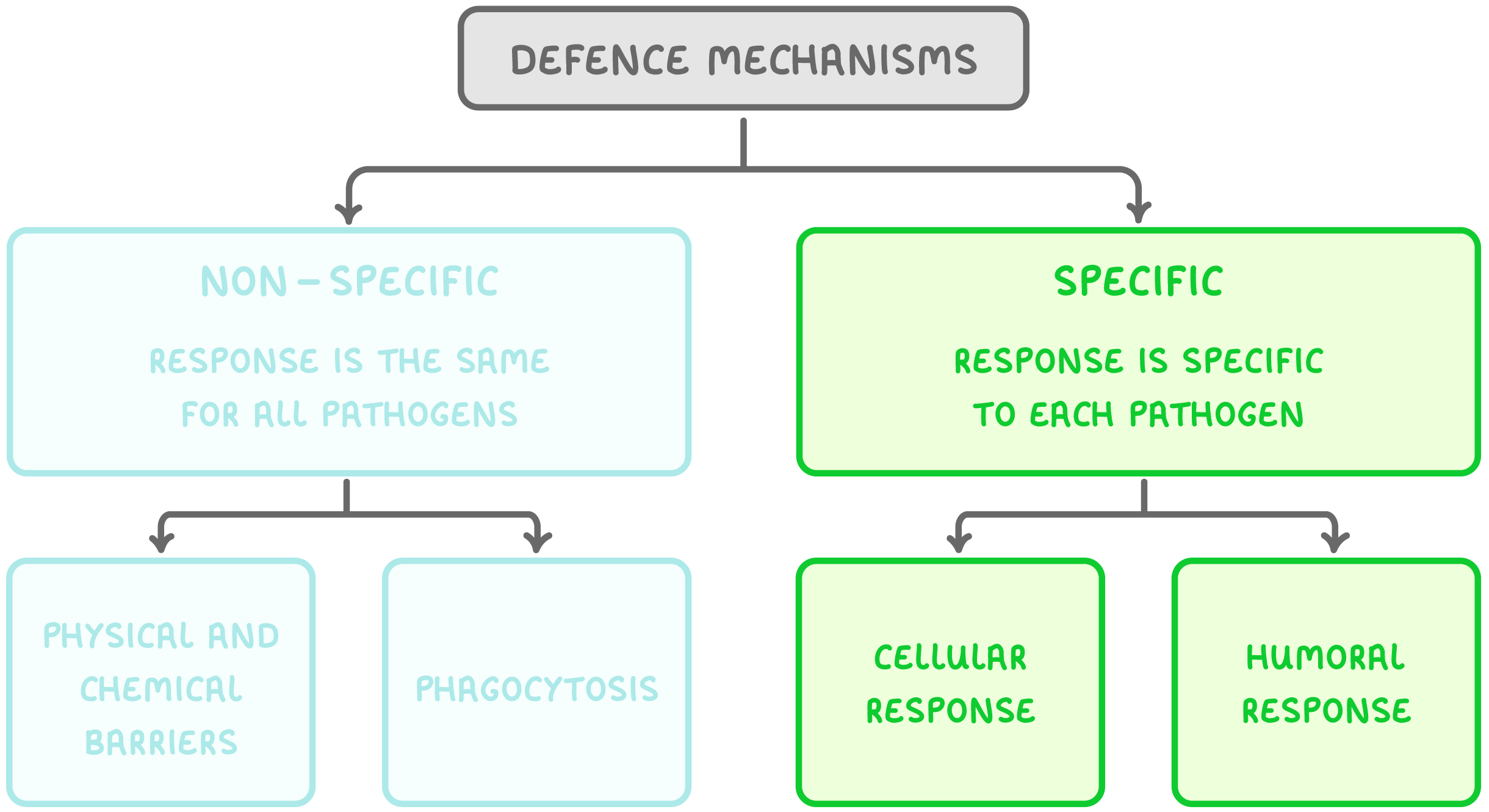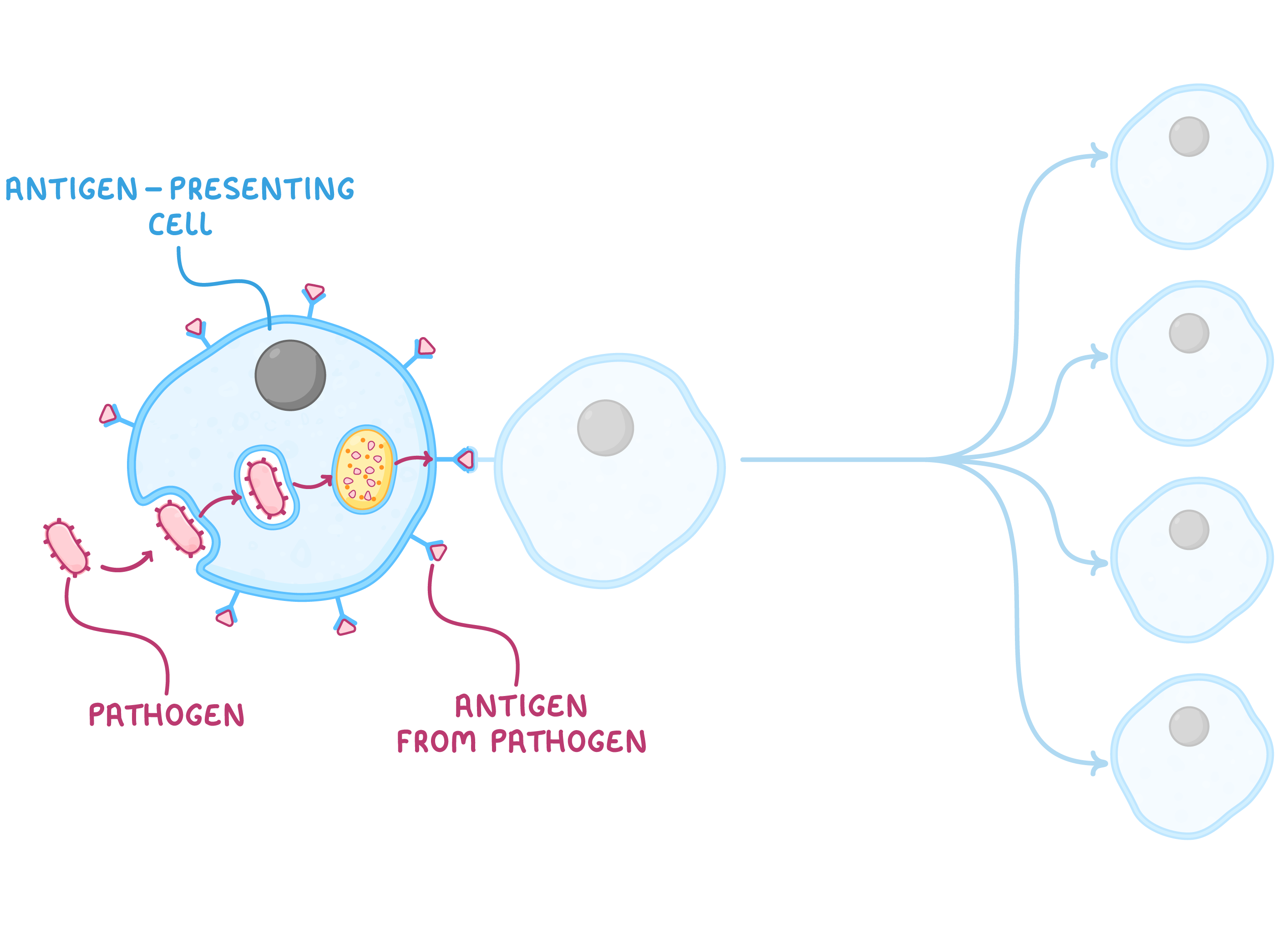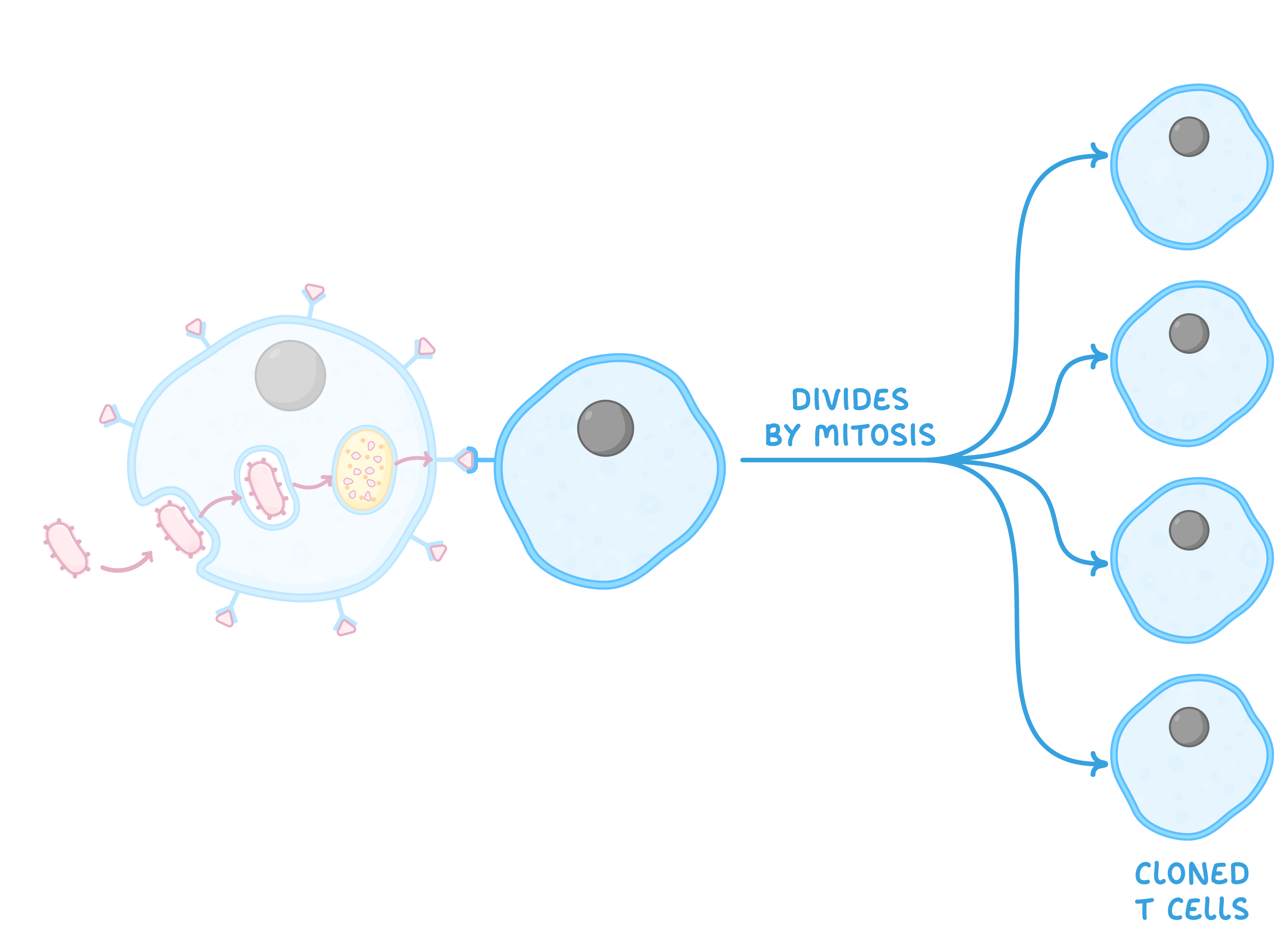T Lymphocytes & Cell-mediated Immunity
This lesson covers:
- The different types of lymphocytes
- The different types of T cells
- The role of T cells in the cellular response
Specific defence mechanisms Specific defence mechanisms are slower than non-specific defences, but they produce a unique response for each type of pathogen. They also provide long-term immunity against specific pathogens.  |
The specific immune response depends on a type of white blood cell known as a lymphocyte. These cells are produced in the bone marrow. There are two types of lymphocyte:
|
T cells You need to know about the following types of T cell:
These cells have receptors on their cell-surface that bind to complementary antigens on antigen-presenting cells. After binding, they can form memory cells, stimulate B cells or phagocytes, and activate cytotoxic T cells.
These cells kill abnormal and foreign cells by producing a protein known as perforin. this protein makes holes in the cell-surface membrane, causing it to become freely permeable and causing cell death.
These cells provide long-term immunity against specific pathogens. They provide a rapid response if the body is re-infected by the same pathogen. |
Stages of the cellular response The cellular response is so-called because T cells will only respond to antigens presented on body cells rather than antigens within body fluid. The stages of the cellular response are as follows: |
 Phagocytes engulf pathogens and display their antigens on the cell-surface. They are now known as antigen-presenting cells. |
The cloned T cells can carry out different functions:
|

